The Best Perfectly Roasted Butternut Squash Recipe for Fall
Butternut squash brings magic to autumn dinner tables with its rich, velvety texture and golden-brown edges.
Crisp evenings call for comforting side dishes that warm our souls.
Mediterranean kitchens celebrate this humble vegetable’s versatility and depth of flavor.
Simple seasonings can unlock incredible potential in each tender cube.
Salt, pepper, and olive oil work culinary alchemy during roasting.
Caramelized edges hint at deliciousness waiting to be savored.
You might find yourself craving this method after one delectable bite.
Storing Roasted Butternut Squash for Later
Pairing Ideas for Roasted Butternut Squash
Serving Styles for Roasted Butternut Squash
FAQs
A sharp chef’s knife or a heavy-duty vegetable peeler makes cutting butternut squash easier and safer. Always cut on a stable cutting board and use slow, controlled movements.
Look for a squash with a deep, matte color, without any soft spots or blemishes. The skin should be hard and the stem should be dry and corky. A ripe squash feels heavy for its size.
While you can roast butternut squash with the skin on, peeling is recommended for a more tender and easier-to-eat texture. The skin can be tough and fibrous, which might affect the overall eating experience.
Spreading cubes in a single layer ensures even heat distribution, prevents steaming, and allows each piece to caramelize and develop a golden-brown color. Overcrowding leads to uneven roasting and soggy results.
Roasted Butternut Squash with Simple Flavor
What You Need for Roasted Butternut Squash
Main Ingredients:Seasoning Ingredients:Garnish Ingredients:How to Make Roasted Butternut Squash Easily
Step 1: Prepare the Oven
Fire up your oven to a toasty 400F (200C).
Position the rack in the middle for perfect heat distribution.
Step 2: Prep the Vegetable
Wash the butternut squash thoroughly.
Using a sharp knife, slice off both ends.
Carefully peel the tough skin with a vegetable peeler.
Split the squash in half lengthwise and scoop out the seeds with a spoon.
Chop the squash into bite-sized cubes, roughly 1-inch thick.
Step 3: Season the Squash
Grab a spacious mixing bowl and add:Toss the cubes gently, ensuring each piece gets an even coating of seasonings.
Step 4: Arrange for Roasting
Line a rimmed baking sheet with parchment paper or a silicone mat.
Spread the seasoned squash cubes in a single layer, leaving space between each piece.
Overcrowding prevents proper caramelization.
Step 5: Roast to Perfection
Slide the baking sheet into the preheated oven.
Roast for 25-30 minutes, using tongs to flip the cubes halfway through cooking.
Look for golden-brown edges and a tender texture when pierced with a fork.
Step 6: Finish and Serve
Transfer the roasted squash to a serving platter.
Sprinkle with fresh thyme or rosemary leaves for an aromatic touch.
Serve immediately while warm and crispy.
Tips to Elevate Roasted Butternut Squash
Print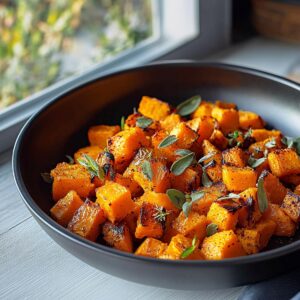
Perfectly Roasted Butternut Squash Recipe
- Total Time: 45 minutes
- Yield: 4 1x
Description
Homemade roasted butternut squash brings Mediterranean warmth to winter dining tables with golden caramelized edges and rich herbal notes. Mediterranean seasoning and olive oil create a simple side dish you’ll crave with every seasonal meal.
Ingredients
Main Ingredients:
- 1 medium butternut squash (peeled, seeded, and cut into 1-inch cubes)
Oils and Seasonings:
- 2 tablespoons (30 milliliters) olive oil
- 1/2 teaspoon (2.5 grams) salt
- 1/4 teaspoon (1.25 grams) black pepper
Optional Spices and Garnish:
- 1/2 teaspoon (2.5 grams) ground cinnamon
- 1/4 teaspoon (1.25 grams) ground nutmeg
- Fresh thyme or rosemary (for garnish)
Instructions
- Prepare a roasting environment by heating the oven to 400F (200C), ensuring a perfectly calibrated temperature for caramelization.
- Transform the raw butternut squash by carefully removing its tough exterior skin, extracting the inner seeds, and transforming it into uniform 1-inch cubes with precise knife skills.
- Create a flavor foundation by gently coating the squash cubes with olive oil, then generously seasoning with salt and pepper, with optional warmth from ground cinnamon and nutmeg.
- Strategically distribute the seasoned cubes across a baking sheet, ensuring each piece has adequate breathing room to achieve maximum golden-brown edges and prevent steaming.
- Roast the squash for 25-30 minutes, conducting a midpoint rotation to guarantee even caramelization and tender interior, watching for a rich golden color and soft texture when pierced with a fork.
- Elevate the final presentation by delicately garnishing with fresh thyme or rosemary sprigs, adding an aromatic herb accent before serving the roasted squash piping hot.
Notes
- Swap olive oil with avocado or coconut oil for a different flavor profile and added health benefits.
- Experiment with alternative spices like smoked paprika, cumin, or curry powder to create unique taste variations.
- Cut cubes slightly larger for a softer interior or smaller for crispier edges, depending on personal preference.
- Enhance the dish’s nutritional value by sprinkling toasted pumpkin seeds or chopped nuts on top before serving.
- Prep Time: 15 minutes
- Cook Time: 30 minutes
- Category: Lunch, Dinner, Appetizer, Snacks
- Method: Roasting
- Cuisine: American
Nutrition
- Serving Size: 4
- Calories: 140
- Sugar: 2 g
- Sodium: 125 mg
- Fat: 7 g
- Saturated Fat: 1 g
- Unsaturated Fat: 6 g
- Trans Fat: 0 g
- Carbohydrates: 18 g
- Fiber: 3 g
- Protein: 2 g
- Cholesterol: 0 mg
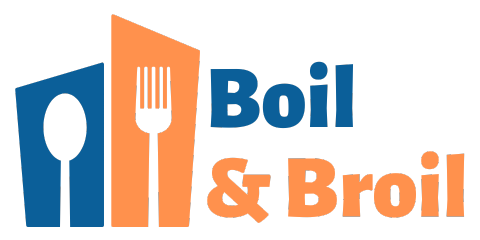
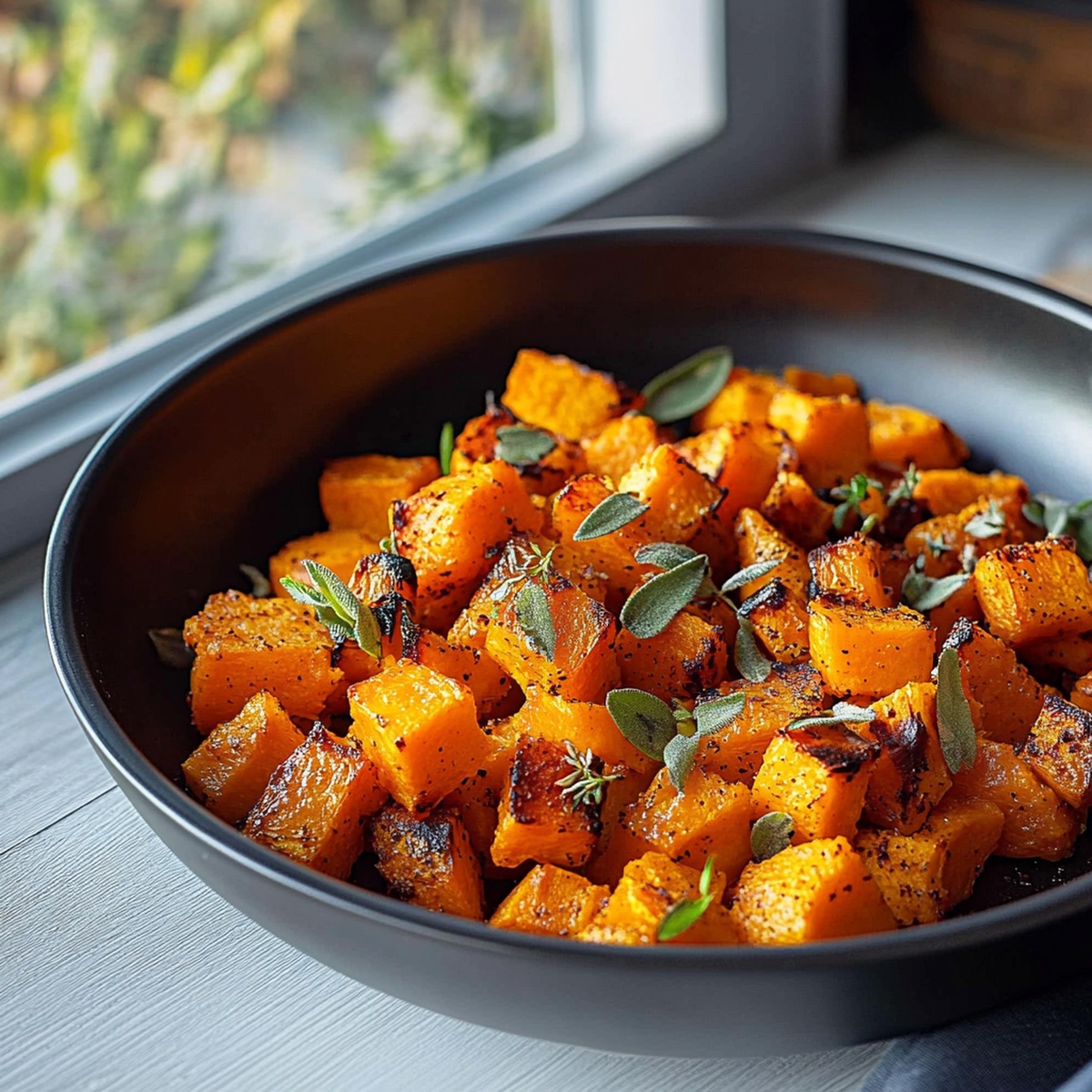
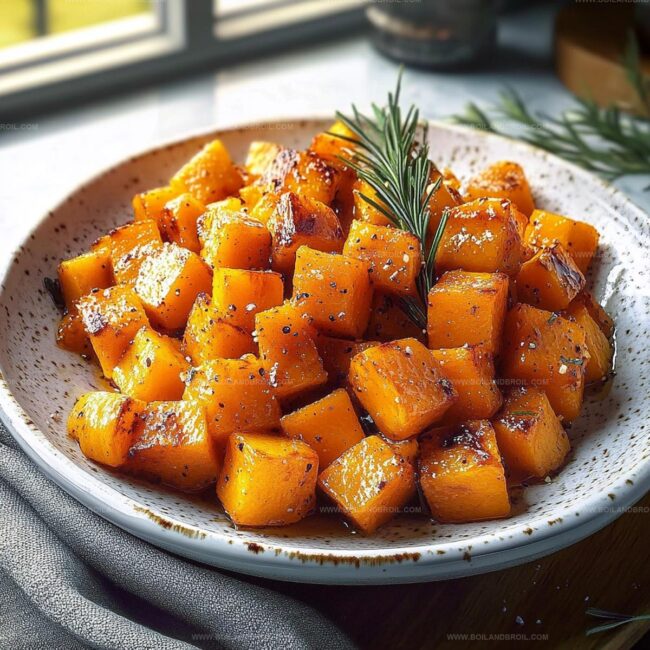
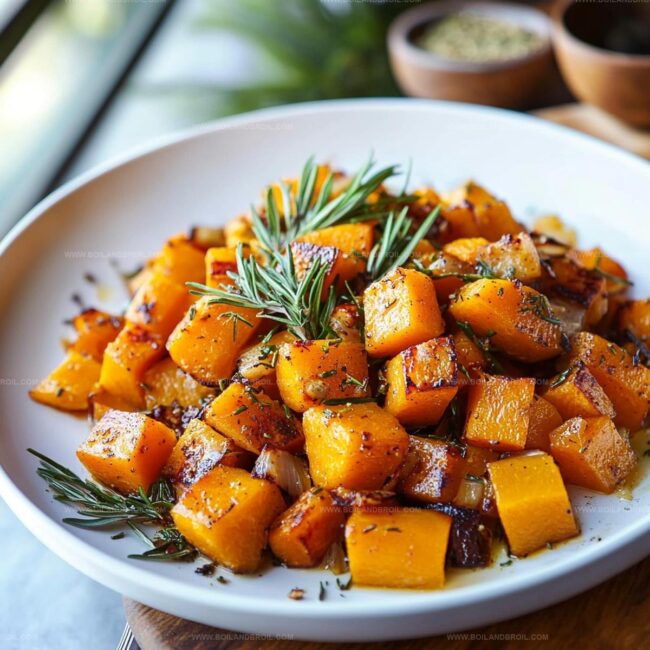
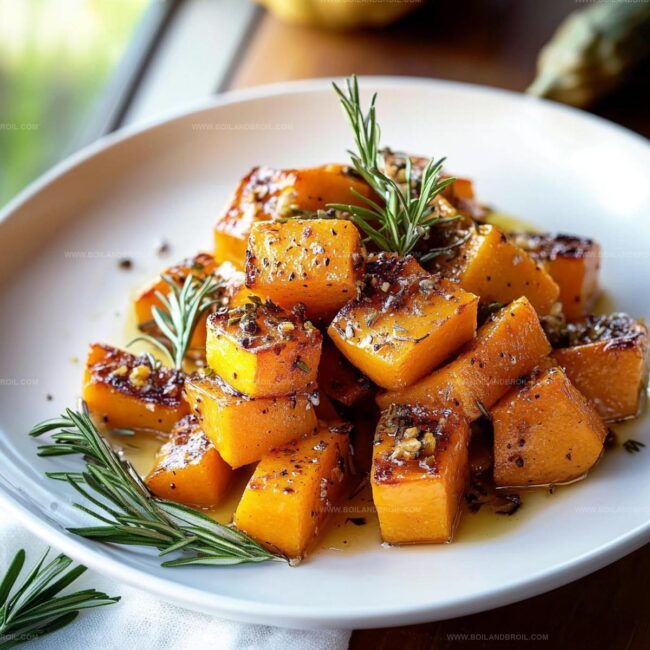
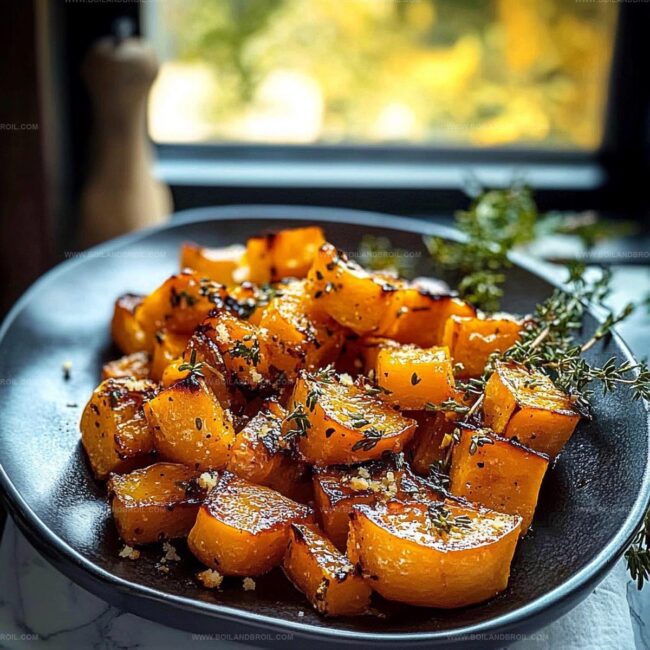

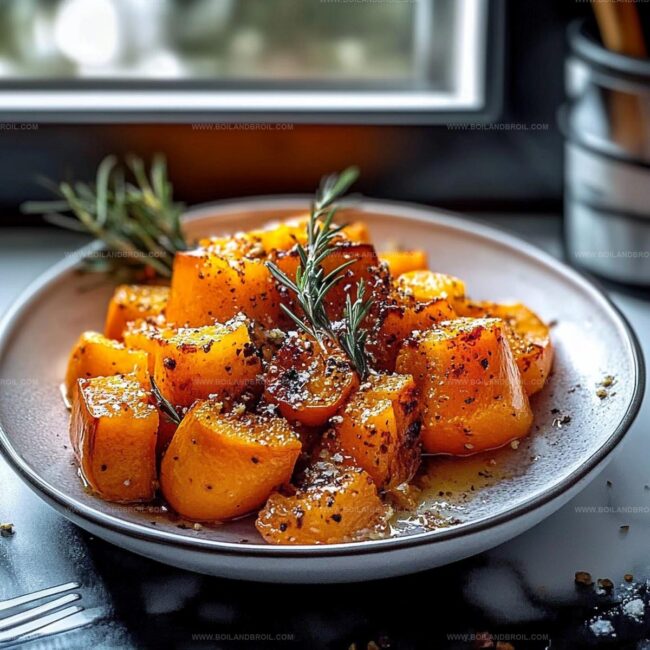
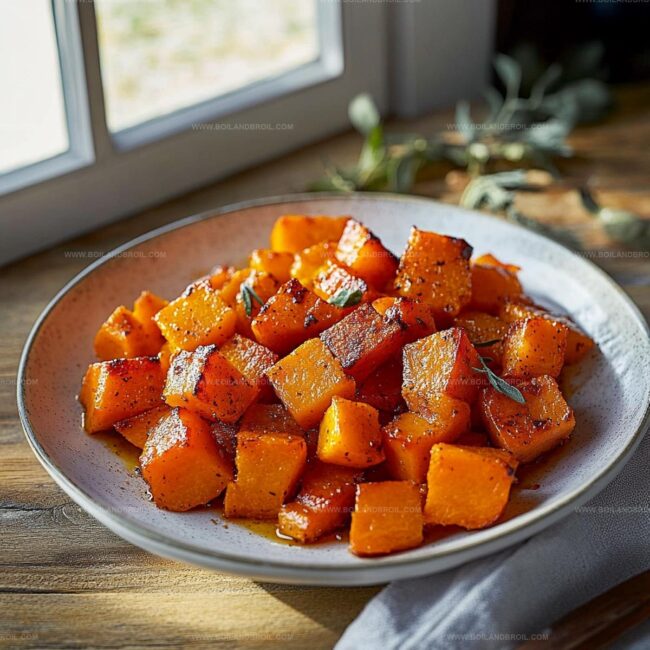
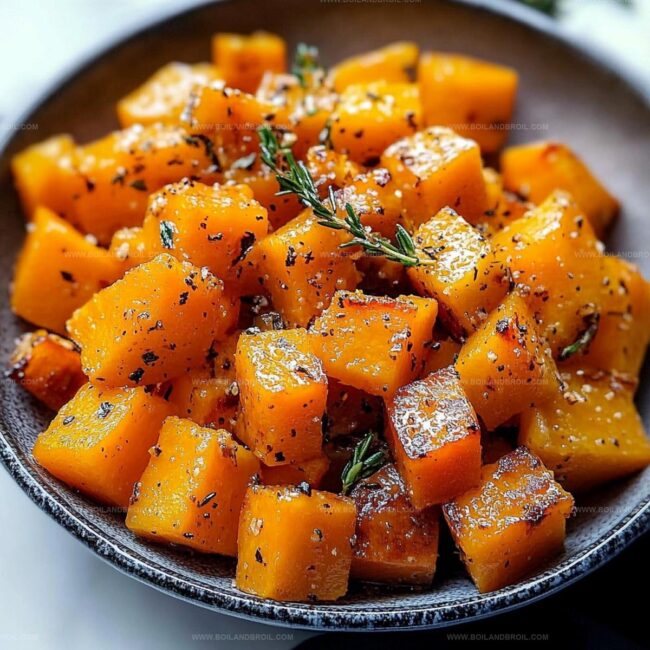
Jack Sullivan
Founder & Culinary Storyteller
Expertise
Single-recipe development with a narrative approach, Culinary storytelling and food history, Seasonal and regional ingredient utilization, Home cooking techniques adapted for modern kitchens
Education
New England Culinary Institute (Montpelier, VT)
Certificate in Culinary Arts
Focused on farm-to-table cooking, sustainable practices, and modern plating techniques.
Asheville-Buncombe Technical Community College
Associate Degree in Culinary Arts
Emphasized Southern Appalachian cuisine and local ingredient sourcing.
Jack grew up surrounded by smoky skillets and handwritten recipes in the mountains of North Carolina. His roots in Appalachian cooking shaped the way he sees food – as something that connects people, tells a story, and holds meaning.
With hands-on training and a background in sustainable, regional cooking, Jack started Boil And Broil to make meaningful meals more accessible. He’s all about one-dish recipes that are simple to follow but rich with flavor and history.